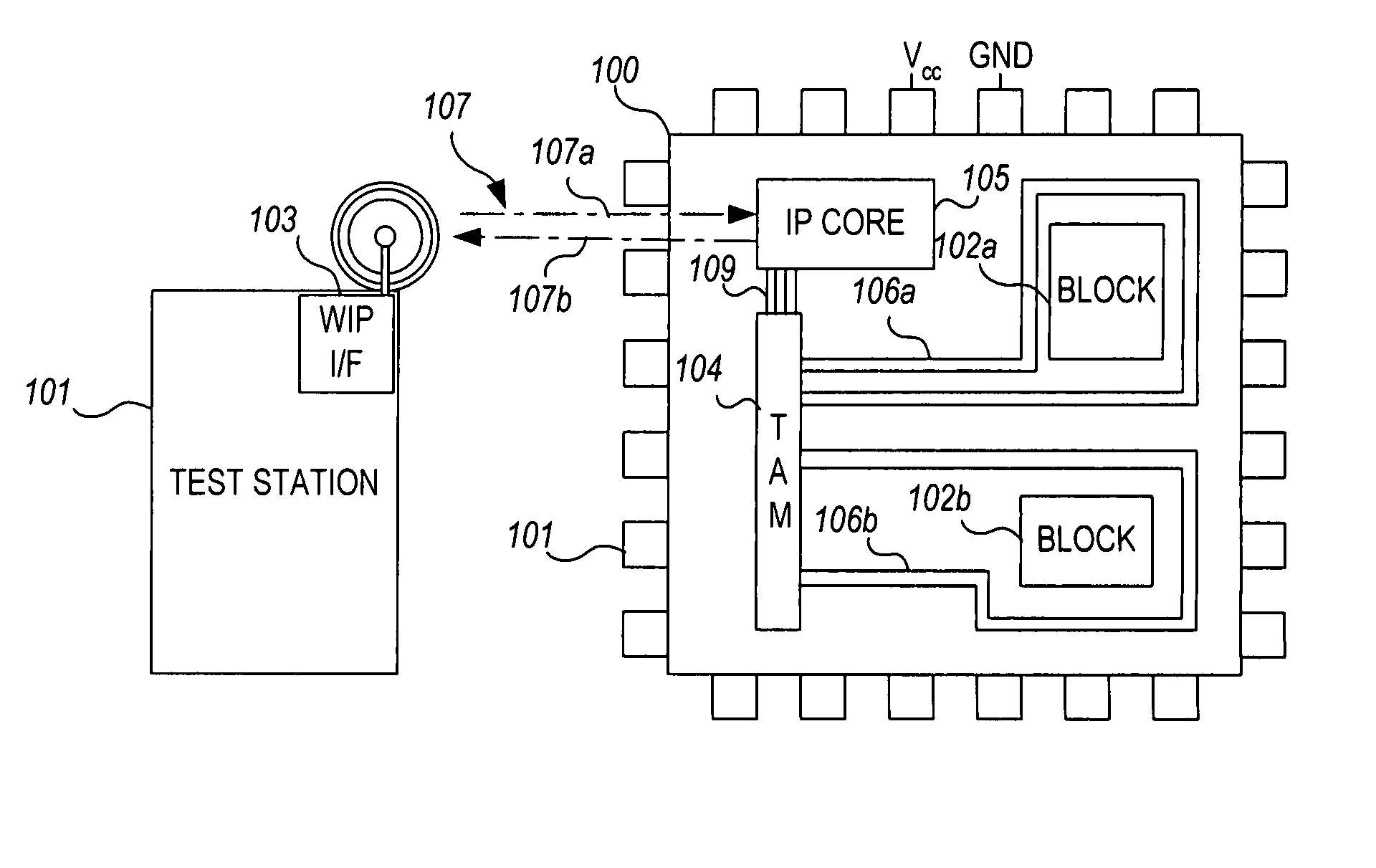Wireless no-touch testing of integrated circuits
a technology of integrated circuits and testing methods, applied in the direction of error detection/correction, instruments, semiconductor/solid-state device testing/measurement, etc., can solve the problems of increasing test costs, increasing the cost of integrated circuit testing, and continuing to fall the cost of integrated circuit fabrication, so as to increase the speed of loading the chain and reduce the impact of cos
- Summary
- Abstract
- Description
- Claims
- Application Information
AI Technical Summary
Benefits of technology
Problems solved by technology
Method used
Image
Examples
Embodiment Construction
[0029]Turning now to the drawings, FIG. 2A is a high-level system diagram, and FIG. 2B is an operational flowchart, of an integrated circuit test system 1 illustrating the general concept of the invention. As illustrated, according to the present invention, a single test station computer 2 equipped with a wireless internet protocol interface 1 is configured to communicate with one or more devices under test (DUTs) 5a, 5b, . . . , 5n equipped with wireless IP cores 4a, 4b, . . . , 4n over a wireless IP connection 6a, 6b, 6c. The wireless IP cores 4a, 4b, . . . , 4n are connected to or are connectable to DFT structures 7a, 7b, . . . , 7n that are configured to test various functional blocks (not shown) within the respective DUTs 5a, 5b, . . . , 5n. The DUTs 5a, 5b, 5n may be integrated circuit wafers, packaged integrated chips, printed circuit boards, etc., as long as they include some form of Design-For-Test functionality that requires digital test data.
[0030]The test station 2 sends...
PUM
 Login to View More
Login to View More Abstract
Description
Claims
Application Information
 Login to View More
Login to View More - R&D
- Intellectual Property
- Life Sciences
- Materials
- Tech Scout
- Unparalleled Data Quality
- Higher Quality Content
- 60% Fewer Hallucinations
Browse by: Latest US Patents, China's latest patents, Technical Efficacy Thesaurus, Application Domain, Technology Topic, Popular Technical Reports.
© 2025 PatSnap. All rights reserved.Legal|Privacy policy|Modern Slavery Act Transparency Statement|Sitemap|About US| Contact US: help@patsnap.com



